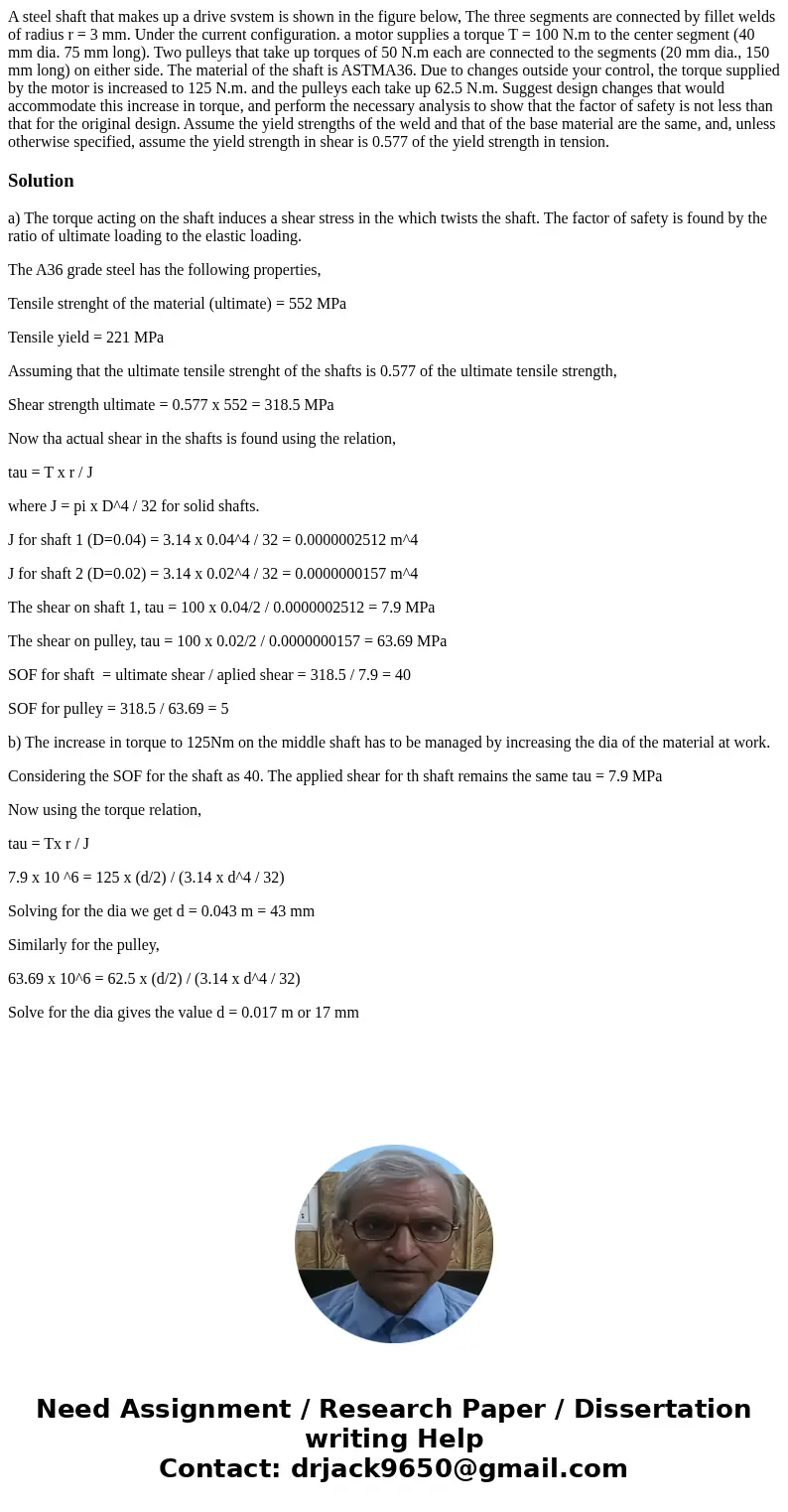A steel shaft that makes up a drive svstem is shown in the f
Solution
a) The torque acting on the shaft induces a shear stress in the which twists the shaft. The factor of safety is found by the ratio of ultimate loading to the elastic loading.
The A36 grade steel has the following properties,
Tensile strenght of the material (ultimate) = 552 MPa
Tensile yield = 221 MPa
Assuming that the ultimate tensile strenght of the shafts is 0.577 of the ultimate tensile strength,
Shear strength ultimate = 0.577 x 552 = 318.5 MPa
Now tha actual shear in the shafts is found using the relation,
tau = T x r / J
where J = pi x D^4 / 32 for solid shafts.
J for shaft 1 (D=0.04) = 3.14 x 0.04^4 / 32 = 0.0000002512 m^4
J for shaft 2 (D=0.02) = 3.14 x 0.02^4 / 32 = 0.0000000157 m^4
The shear on shaft 1, tau = 100 x 0.04/2 / 0.0000002512 = 7.9 MPa
The shear on pulley, tau = 100 x 0.02/2 / 0.0000000157 = 63.69 MPa
SOF for shaft = ultimate shear / aplied shear = 318.5 / 7.9 = 40
SOF for pulley = 318.5 / 63.69 = 5
b) The increase in torque to 125Nm on the middle shaft has to be managed by increasing the dia of the material at work.
Considering the SOF for the shaft as 40. The applied shear for th shaft remains the same tau = 7.9 MPa
Now using the torque relation,
tau = Tx r / J
7.9 x 10 ^6 = 125 x (d/2) / (3.14 x d^4 / 32)
Solving for the dia we get d = 0.043 m = 43 mm
Similarly for the pulley,
63.69 x 10^6 = 62.5 x (d/2) / (3.14 x d^4 / 32)
Solve for the dia gives the value d = 0.017 m or 17 mm

 Homework Sourse
Homework Sourse